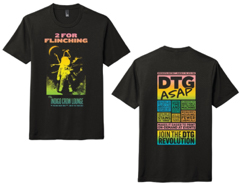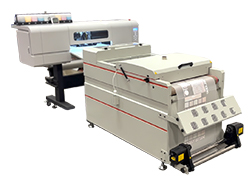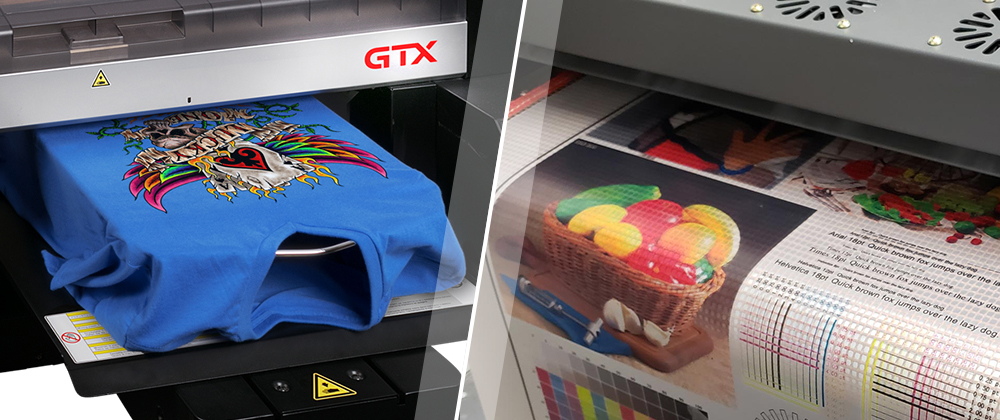Print-on-demand production experienced a real boom in 2021, and so far that popularity is showing no sign of waning. Among the many decorating methods that can potentially fill this need, two have emerged as the clear front-runners. Direct-To-Garment (DTG) has been around for some time, while Direct-To-Film (DTF) is a relative newcomer.
DTG printing is pretty much all in the name — think about running shirts through an inkjet printer instead of paper and you’re pretty close to the right idea. (It’s actually a little more complicated, but we’ll get to that!) Meanwhile, DTF printing is used to create film transfers, printing designs onto a piece of film which are then transferred to a garment, allowing you to create your own designs and submit them to a service provider for production without all the added equipment costs.
Both are great options for printing detailed designs onto apparel on an on-demand basis, and both have generated a lot of industry interest in the past couple years. So which is the best choice for your business? Let’s take a closer look and compare their features and requirements.
Direct-To-Garment

- Pre-treatment: In the case of DTG, the process usually starts with the pre-treatment of the garments. This is a necessary before printing, as we are going to work directly on the fabric, and this allows the ink to be well-fixed and avoid transferring it through the fabric. (Note that some apparel products, like the Perfect Tri DTG Tee, allow you to skip this part.)
- Printing on the garment: With DTG you are literally printing directly to the garment, so the process can be shorter than DTF.
- Designed for shirts and more: DTG machines are built to print on t-shirts, polo shirts and fleece, and are also capable of printing on bags, headwear, towels and blankets with the use of alternate platens.
- White ink usage: We have the option of putting a white mask as a base, to ensure that the ink does not mix with the color of the media.
- Printing on substrates/fabrics: Right now, most DTG machines print on 100% cotton, but some DTG machines have special inks for 100% polyester.
- Final press: To fix the ink, we must do a final press or run through a tunnel dryer to cure the ink.
- DTG Equipment
Direct-To-Film

- No need for pre-treatment: As DTF printing means pre-printing onto film which will be transferred on to the product, there is no need to pre-treat the fabric.
- No color limits: DTF is a digital printing method, so there is no limit to the number of colors you can print. One-color designs, gradients, textures, full-color illustrations, or photographs are all possible without differences in time or cost.
- Printing on film: Since we print on film and then transfer the design to the fabric, the process can be a bit longer compared to DTG.
- Can be used on most apparel products: Film transfers can be applied to shirts, bags, headwear, outerwear and accessories.
- Lower cost per print: Film transfers cost less to produce and apply than DTG inks.
- White ink usage: In this case, it is necessary to use a layer of white ink, which is placed on top of the color layer. This is the layer that is transferred onto the fabric and serves as a base for the main colors of the design.
- Any type of fabric: One of the advantages of DTF is that it allows you to work with any type of fabric, not just cotton.
- DTF Equipment
Currently, DTG machines are much more versatile and allow for larger and faster production than DTF, so it’s important to be clear about the production needs of your business. DTG has more versatile printing machines with different platens and processes, allowing for faster and more flexible printing.
At the same time, interest in DTF is picking up at recent tradeshows that I have attended, but they have quite different applications and uses. For smaller-scale printing, DTF may be more suitable when you’re looking for better color results.
